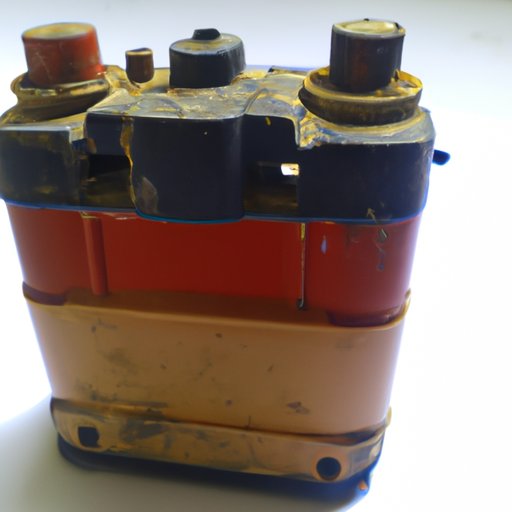Introduction
Having a reliable car is important for anyone who needs to get around town or on longer trips. One of the most important components of a vehicle is the starter, which is responsible for getting the engine going. Knowing how to test a starter can help you identify any potential issues before they become serious concerns. This article will provide a comprehensive guide to testing a starter, covering everything from using a digital multimeter to checking the power output from the battery.

Testing the Voltage of a Starter with a Digital Multimeter
One of the first steps in testing a starter is to measure its voltage. To do this, you’ll need a digital multimeter, which is a device that measures electrical current. Once you have your multimeter, you can take readings from the starter by touching the positive and negative terminals with the probes. You should expect to see a reading of 12 volts when the starter is engaged and 0 volts when it is not.

Inspecting the Starter for Signs of Wear and Tear
It’s also important to inspect the starter for signs of wear and tear, as this can indicate potential problems. Some common signs of wear and tear include cracks in the housing, loose connections, and frayed wires. If you notice any of these issues, it’s best to consult a professional mechanic before attempting to fix them yourself.
Checking the Solenoid Terminals for Corrosion or Loose Connections
The solenoid terminals are what connect the starter to the battery, so it’s important to check them for corrosion or loose connections. Corrosion can be identified by a white, powdery substance on the terminals, while loose connections will be visible as gaps between the terminals and the wires. If either of these issues is present, you should tighten the connections and clean off any corrosion before proceeding.
Ensuring the Starter is Receiving the Correct Amount of Power from the Battery
The next step is to make sure the starter is receiving the correct amount of power from the battery. To do this, you’ll need to use a voltage tester to measure the output from the battery. The ideal reading should be 12 volts, but if it’s lower than that, you may need to replace the battery or charge it up. It’s also important to ensure the cables connecting the battery to the starter are in good condition and free of any damage.

Listening for Unusual Sounds Coming from the Starter When it is Engaged
When testing the starter, it’s important to listen for any unusual sounds coming from it when it is engaged. These could indicate problems such as worn-out bearings or a faulty solenoid. If you hear any strange noises, it’s best to consult a professional mechanic to determine the cause and take the necessary steps to fix it.
Using a Starter Load Tester to Verify the Starter Motor’s Performance
Finally, you can use a starter load tester to verify the performance of the starter motor. This device is designed to measure the current draw of the starter motor, as well as the amount of torque produced. If the readings are too low, it could indicate an issue with the starter motor itself, such as a worn-out bearing or a faulty solenoid. In this case, it’s best to consult a professional mechanic.
Conclusion
Testing a starter is an essential step in ensuring your car is running safely and efficiently. This comprehensive guide covered everything from using a digital multimeter to checking the power output from the battery. Remember, if you ever have any doubts about the condition of your starter, it’s always best to consult a professional mechanic.
(Note: Is this article not meeting your expectations? Do you have knowledge or insights to share? Unlock new opportunities and expand your reach by joining our authors team. Click Registration to join us and share your expertise with our readers.)
